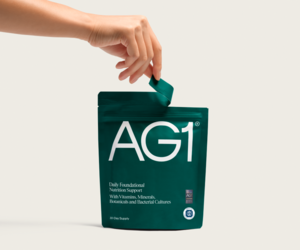6 ways music can improve wellbeing

Silence is rare – especially in London. Music is all around us. It is made up of vibrations of different frequencies; heard in the sounds of nature, the rattle of the trains, even the growl of car engines. Within the universe, the musical elements of ‘time’ and ‘rhythm’ are involved in how the earth and the moon interact with the cycle of the tides, days, nights and months. These rhythms and energies can affect our bodies; for example, women often feel more full and bloated around the full moon.
In eastern philosophy, the mystery of the beginning of all life is understood as starting when a single vibration began, to which the response created a resonance. People may either ‘resonate’ in harmony with each other or grate on each other’s nerves. The way we interact is called the ‘psychodynamics’ and music has dynamics too.
1. Listening
Music is an art form available to almost every human being. Anyone can explore safe and appropriate ways in which music can lift their mood. In public places, such as certain London Underground Stations, classical music is played to enhance a calm mood across a busy, crowded environment where people might otherwise get stressed.
Healthcare practitioners frequently use music to stimulate an ambient mood — like at Broadmoor Hospital, on the outskirts of London.
2. To promote memory and life review
Pre-recorded music has associations to times and places in our lives. Songs can evoke past feelings and memories, which may be romantic, sad, happy or funny. Perhaps a song by a band you enjoyed as a teenager brings back memories of concerts at the Lyceum in the Strand.
Hearing a favourite old song can bring back happier times, especially for older generations and they can often recall the lyrics, which they hadn’t thought of in a long time, and enjoy sharing their memories. This is important in helping the individual to have a sense of continuity through their life and to orientate them to the past.
3. To reduce anxiety
Whether music is played on a hospital ward, in a Zumba class, a Pilates class, a religious ceremony, or a military cavalcade with men and horses marching through London, music underpins the movements and pace of events through the tempo, rhythms, mood and harmonies.
Gyms often use energetic music during physical exercise classes followed by relaxation and meditative music to finish.
Anxiety can be misunderstood as simply a digestive or eating problem, but it’s unprocessed energy, which can be expended in music therapy through playing instruments. Moving and being creative can help people to free themselves from anxiety and stress cycles.
4. Learning an instrument for global mental improvements
Practising a musical instrument is associated with enhanced verbal ability, the ability to work things out and improved motor co-ordination. This is because a lot of components and hours of discipline are involved in becoming accomplished on an instrument.
There are cases of children who, through the confidence, increased attention span and ability to process mentally, progressed from the bottom to the top set in a year.
5. Playing with others for improved sociability
Especially for those who have difficulties socialising, playing music in a group can help make new friends and build self-esteem through bonding in a shared activity and goal.
It’s often been linked to high achievers, with playing the oboe being described as ‘an automatic ticket to an ivy league university’ (Harvard or Yale) in America.
6. Improvisation in music therapy for improving and sustaining mental health
The greatest form of improvised music is jazz and everyone can get involved, whether they play an instrument or not. It’s particularly effective for people who live with schizophrenia as it helps with mental organisation and crossing the bridge between the two hemispheres of the brain, thereby integrating emotional responses and cognitive thinking processing. Once a person has expressed their inner feelings non-verbally through jointly-creating music within a trusting therapeutic relationship, they may be able to more easily recognise what they are feeling and start to find the right words to be able to talk about their problems and thereby receive help from others.
Dr Stella Compton-Dickinson is a London-based Health and Care Profession council registered music therapist, accredited supervisor, professional oboist and lecturer, UK Council for Psychotherapy registered Cognitive Analytic Therapist and Supervisor. She is author of The Clinician’s Guide to Forensic Music Therapy (Jessica Kingsley Publishers), and has her own private practice and twenty years’ experience in the National Health Service as a Clinician, Head of Arts Therapies and Clinical Research Lead her research was awarded the 2016 Ruskin Medal for the most impactful doctoral research.










